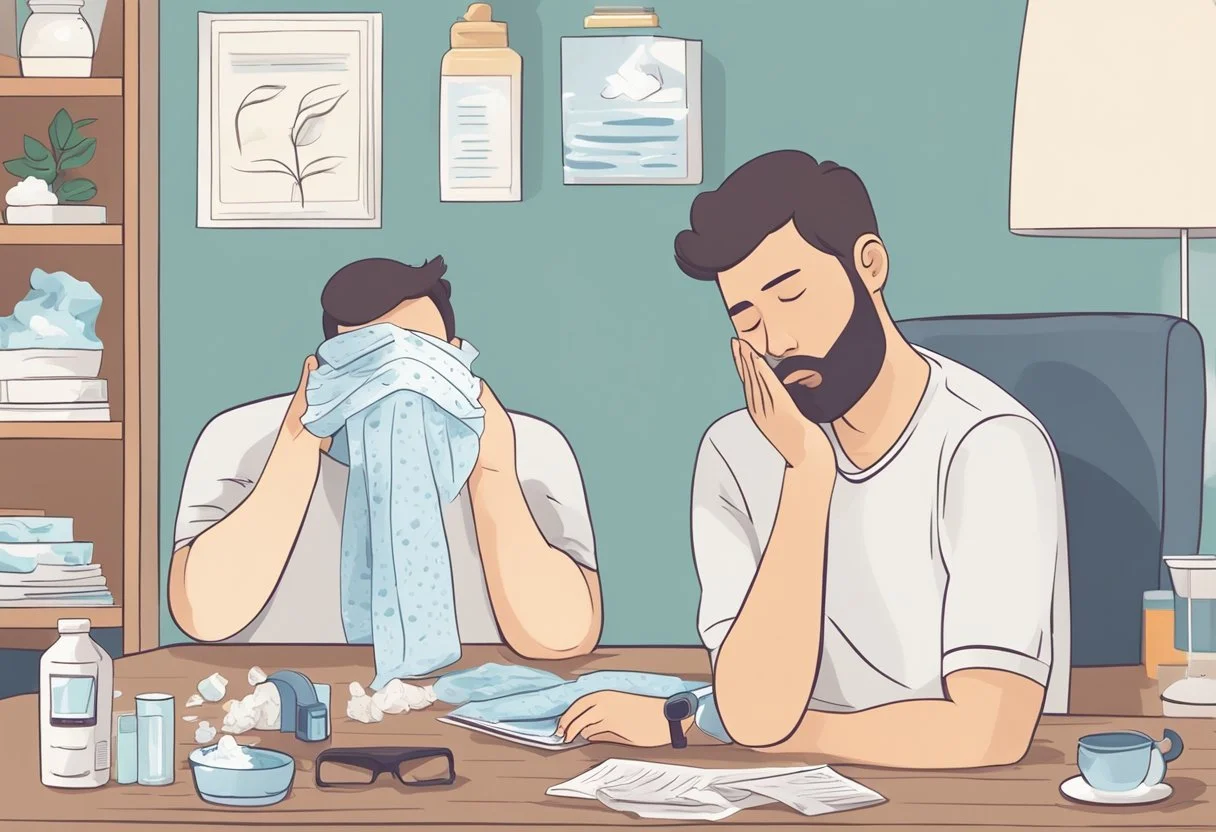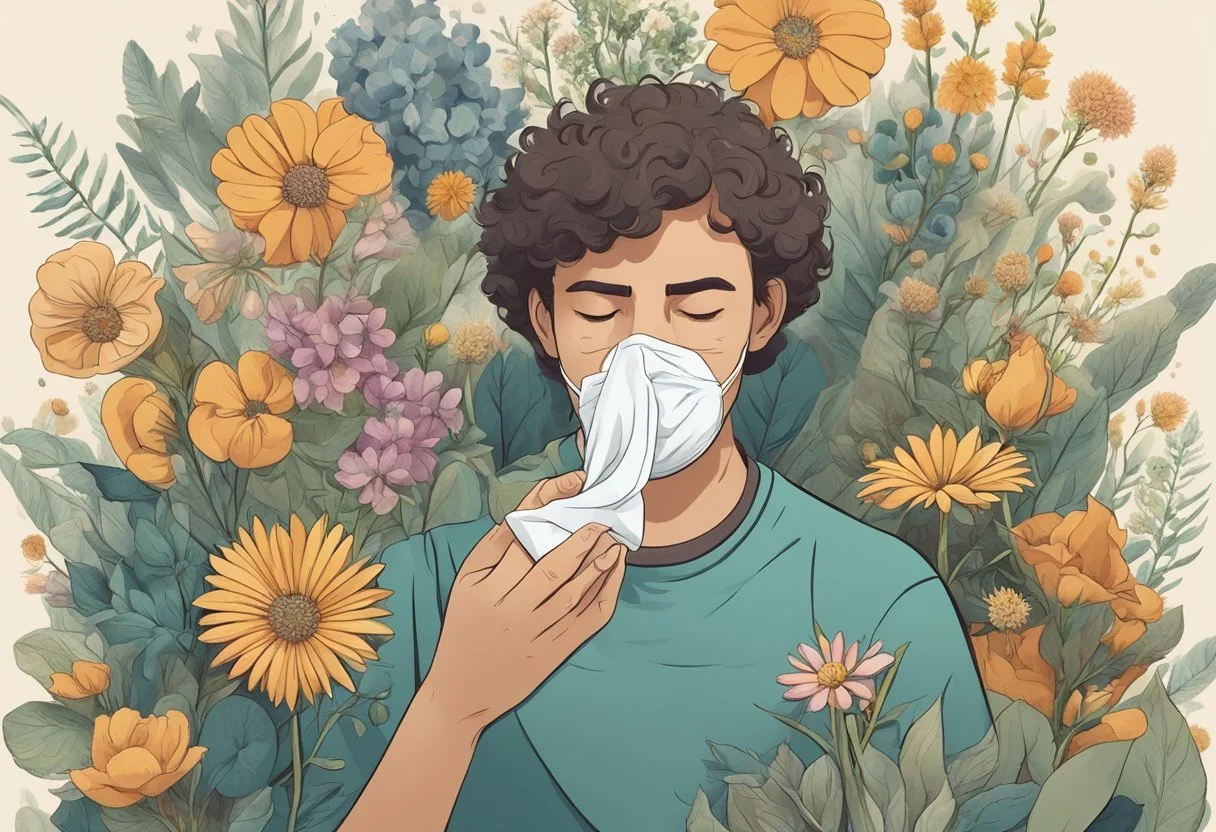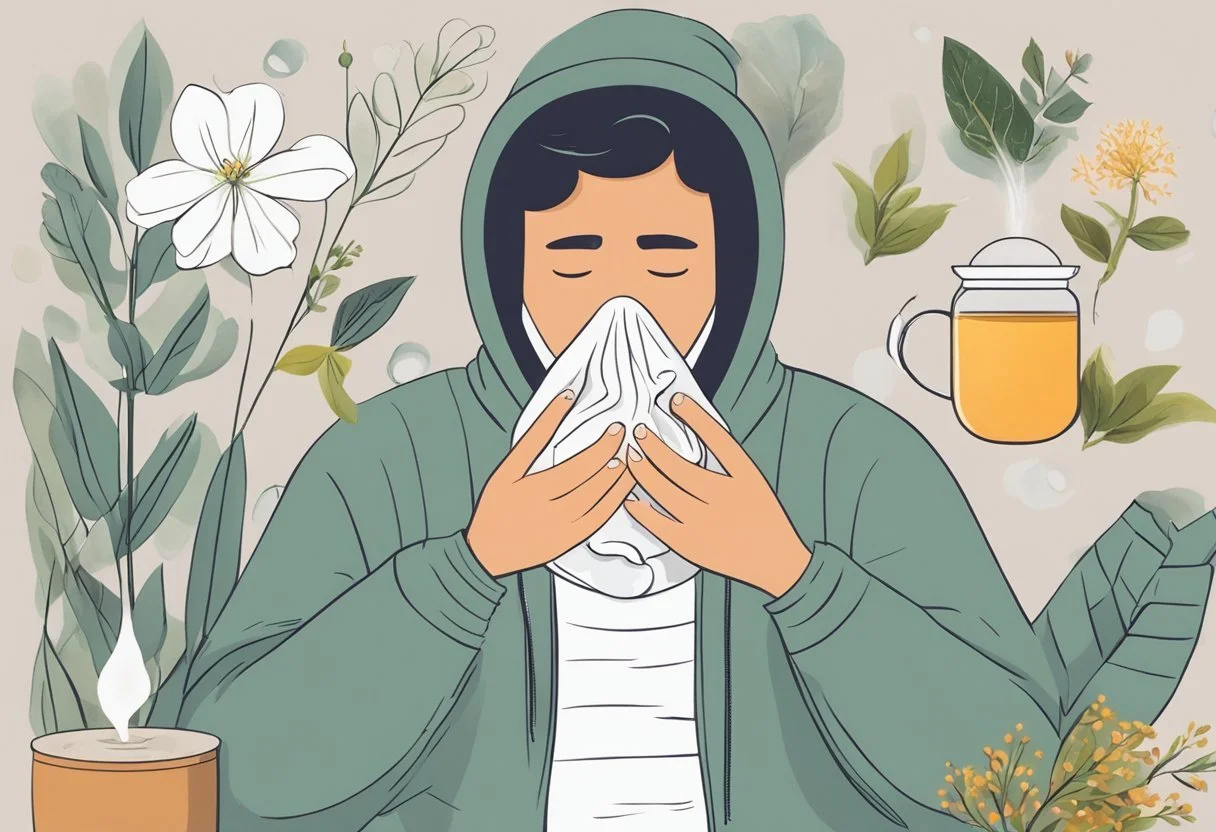Stuffy Nose
Symptoms, Causes, and Home Remedies
Discover > Health Conditions > Stuffy Nose
A stuffy nose, medically known as nasal congestion, is a common ailment that affects people of all ages. It occurs when the nasal tissues and blood vessels become swollen with excess fluid, resulting in difficulty breathing through the nose. Nasal congestion is often accompanied by other symptoms such as sneezing, coughing, and a runny nose, making it an irritating and sometimes uncomfortable condition to manage.
Various factors can contribute to the development of a stuffy nose, including allergies, colds, and sinus infections. Environmental irritants such as pollen, dust, and pet dander can also lead to nasal congestion. Identifying the underlying cause of your stuffy nose is essential to finding the most effective treatment and relief for this bothersome symptom.
There are several home remedies that have proven successful in alleviating the discomfort associated with nasal congestion. These remedies, which often utilize ingredients commonly found in most households, provide a natural and cost-efficient alternative to over-the-counter medications. In this article, we will explore the symptoms, causes, and home remedies for stuffy noses to help you breathe easier and achieve better comfort.
Understanding a Stuffy Nose
Definition and Symptoms
A stuffy nose, also known as nasal congestion or blocked nose, occurs when the nasal passages and sinuses become inflamed or irritated, producing mucus and resulting in a blocked sensation. The most recognizable symptoms of a stuffy nose include:
Difficulty breathing through the nose
Excessive mucus production
Pressure and discomfort in the sinuses
Reduced sense of smell and taste
Common Causes of Nasal Congestion
There are several factors that can lead to the development of nasal congestion. Some of the most common causes are:
Colds and flu: Viral infections can cause inflammation in the nasal passages, leading to mucus production and congestion.
Allergies: Exposure to allergens like pollen, dust, or pet dander can cause an immune response, resulting in nasal inflammation and congestion.
Sinus infections: Bacterial or viral infections in the sinuses can cause inflammation and blocked nasal passages.
Deviated septum: An irregularly-shaped nasal septum can impede airflow and contribute to stuffiness.
Nasal polyps: Small, noncancerous growths in the nasal passages can obstruct airflow and cause congestion.
Understanding the specific cause of a stuffy nose is essential for determining the most effective treatment options and alleviating symptoms. Home remedies, such as saline nasal sprays or warm compresses, can provide relief for congestion caused by various factors, while more targeted treatments like antihistamines or antibiotics may be necessary for allergens or infections, respectively.
Underlying Conditions
Allergies
Allergic rhinitis and hay fever are common causes of a stuffy nose. These conditions occur when the immune system reacts to specific allergens in the environment, such as pollen, dust, or pet dander. The body's response to these allergens leads to nasal inflammation and congestion.
Allergic rhinitis can be seasonal (occurring mainly during specific times of the year) or perennial (present year-round).
Hay fever (seasonal allergic rhinitis) typically occurs during pollen-producing seasons and affects those allergic to specific pollens.
Infections
Infections, such as a cold or the flu, can also cause a stuffy nose. These viral infections lead to inflammation and swelling of the nasal passages, resulting in a nasal congestion.
Sinusitis (rhinosinusitis), an inflammation of the sinuses and nasal passages, can be caused by viral, bacterial, or fungal infections. Chronic sinusitis occurs when inflammation persists for more than 12 weeks and may involve nasal polyps or other structural abnormalities.
Nonallergic rhinitis is not caused by an allergy and may be due to infections, certain medications, environmental irritants, or hormonal changes.
Structural Abnormalities
Some structural abnormalities can result in a stuffy nose by blocking or narrowing the nasal passages:
Deviated septum: Occurs when the thin wall between the nostrils is displaced or crooked, partially obstructing one or both nasal passages. It may be present at birth, caused by injury, or develop as a result of chronic sinusitis.
Nasal polyps: Small, painless growths in the lining of the nasal passages or sinuses that are typically associated with chronic sinusitis or allergic rhinitis. Nasal polyps can cause breathing difficulties and may require medical treatment if they become large or numerous.
Influencing Factors
Environmental Triggers
Exposure to various environmental irritants can lead to a stuffy nose. Common allergens such as pollen, dust, and mold often cause nasal congestion as they trigger an immune response. Swelling of the nasal passages, or inflammation, results from this reaction, making it difficult to breathe. Furthermore, smoke can also irritate the sensitive lining of the nose, leading to additional congestion.
Lifestyle Impact
Certain lifestyle factors can also contribute to nasal congestion. For instance, being exposed to air pollution can negatively affect the nasal passages and cause more frequent symptoms.
Pregnant individuals: Hormonal changes during pregnancy may cause increased blood flow, leading to swelling and nasal stuffiness. This is often temporary and typically resolves after childbirth.
Exposure to allergens: Those who experience seasonal allergies may notice more frequent symptoms when spending time outdoors or when exposed to high levels of pollen and dust.
Smoking: Exposure to secondhand or firsthand smoke can also inflame nasal passages and pose additional congestion risks.
Age-Related Considerations
The susceptibility to stuffy noses may vary with age, as certain age groups experience different triggers and risk factors.
Children: Young children may be more frequently affected by stuffy noses, as their immune systems are still developing and they are more prone to catching colds. Additionally, exposure to environmental allergens may be higher in younger individuals due to their size and proximity to the ground.
Older adults: As people age, their nasal tissues may lose elasticity and become more prone to swelling and congestion. Older adults should be cautious of irritants and consider consulting with a healthcare professional if symptoms persist.
Symptomatic Relief
Over-the-Counter Solutions
There are various over-the-counter (OTC) medications available to help alleviate the symptoms of a stuffy nose. Some common options include:
Antihistamines: These medications work by reducing the production of histamine, a chemical responsible for allergy symptoms. Some popular antihistamines are diphenhydramine (Benadryl) and loratadine (Claritin).
Decongestants: These drugs help to narrow the blood vessels in the nasal passages, reducing nasal congestion. Common decongestants include pseudoephedrine (Sudafed) and phenylephrine (Neo-Synephrine).
Nasal sprays: Saline nasal sprays can help moisturize and loosen mucus in the nasal passages. They do not contain medications, so they can be used frequently without causing side effects.
Pain relief medications: These can help alleviate any pain or discomfort associated with a stuffy nose. Acetaminophen (Tylenol) and ibuprofen (Advil) are commonly used.
Home Remedies
In addition to OTC medications, there are several home remedies that may provide relief from a stuffy nose:
Saline solution: Use a neti pot or a saline nasal spray to help clear out mucus and keep the nasal passages moist.
Steam: Breathe in steam from a bowl of hot water or take a hot shower to help loosen mucus and provide relief.
Humidifier: Adding extra moisture to the air through a humidifier can help to alleviate a stuffy nose by keeping the nasal passages moist and reducing irritation.
Spicy foods: Eating spicy foods can help to provide temporary relief from congestion due to the production of mucus.
Saline Solution: Neti pot or saline nasal spray
Steam: Inhale steam from a bowl or hot shower
Humidifier: Add moisture to the air
Spicy Foods: Eat spicy foods for temporary relief
When to Seek Medical Attention
Recognizing Complications
A stuffy nose is usually harmless and temporary. However, in some cases, a stuffy nose may indicate a more serious issue. There are a few signs you should watch for that may indicate complications:
Fever: A high fever (over 101°F / 38.3°C) may suggest an infection, such as a sinus infection.
Sore throat: Severe sore throat, often accompanied by white or yellow spots on the tonsils, can be a sign of a bacterial infection.
Sinus pain: Persistent sinus pain, especially when accompanied by discolored nasal discharge, may suggest a sinus infection.
Coughing: Consistent coughing, especially with discolored phlegm or blood, indicates a potential infection or other complications.
Chronic vs. Acute Congestion
It is essential to identify whether the stuffy nose is a chronic or acute issue. The main differences between the two are:
Chronic sinusitis: This condition lasts longer than 12 weeks, often due to factors such as allergies, nasal polyps, or deviated septum. It may result in facial pain or pressure, nasal congestion, and discolored discharge.
Acute congestion: A short-term congestion lasting less than 4 weeks, typically due to common colds, flu, or other respiratory infections. It usually improves with time and basic home remedies.
Chronic sinusitis requires professional evaluation and treatment to manage the condition effectively.
Consulting a Healthcare Provider
In the presence of the above risk factors or symptoms, promptly consult a healthcare provider. They may recommend specific treatments or provide antibiotics if a bacterial infection is present.
Seeking medical attention is crucial when experiencing complications or persistent stuffy nose, as it ensures proper management and may help avoid severe outcomes.
Preventive Strategies
Avoiding Triggers
One of the essential steps in preventing a stuffy nose is to avoid triggers. In many cases, stuffy noses are caused by an overreaction to allergens and environmental irritants. Some common triggers include:
Pollen
Dust mites
Pet dander
Mold spores
Smoke
Chemical fumes
To minimize exposure to these triggers, try the following:
Keep your living environment clean and free from dust.
Use air purifiers to filter allergens and irritants.
Cover your nose and mouth with a mask when you're in a potentially irritating environment.
Monitor pollen counts and avoid outdoor activities during peak pollen seasons.
Avoid smoking or exposure to secondhand smoke.
If avoiding triggers is not enough, consider discussing options for allergy medication with a healthcare professional.
Maintaining Good Health
In addition to avoiding triggers, maintaining overall good health can help strengthen your immune system and prevent nasal congestion. A healthy immune system can better handle exposure to environmental irritants and allergens.
To maintain good health, incorporate the following:
Regular exercise: Engaging in physical activities can improve cardiovascular health, including high blood pressure, which can contribute to nasal congestion.
Balanced diet: Consuming a diet rich in fruits, vegetables, lean proteins, and whole grains can provide essential nutrients for a healthy immune system.
Adequate sleep: Ensuring that you get enough sleep each night can help your body's immune system function optimally.
Stress management: Find ways to manage stress, as high levels of stress can weaken the immune system.
Hydration: Drinking plenty of water can help keep nasal passages moisturized and reduce stuffiness.
Avoid alcohol and caffeine: These substances can worsen nasal congestion.
By adopting these preventive strategies, you can reduce the likelihood of developing a stuffy nose and maintain overall good health.
Advanced Treatments and Interventions
If home remedies and over-the-counter treatments are not providing relief for a stuffy nose, it may be necessary to explore advanced treatment options. This section will briefly discuss prescription medications and surgical interventions that may help alleviate stuffy nose symptoms.
Prescription Medications
1. Antihistamines: These medications can help relieve symptoms caused by allergies. Some examples of prescription antihistamines include cetirizine, fexofenadine, and desloratadine.
2. Decongestants: Prescription decongestants, such as pseudoephedrine, can help reduce nasal congestion by narrowing inflamed blood vessels in the nasal passages. However, they should be used with caution, as they can increase blood pressure and may not be suitable for people with certain medical conditions.
3. Nasal Steroids: These sprays are used to reduce inflammation in the nasal passages and may provide relief from symptoms associated with allergies and asthma. Examples include fluticasone, budesonide, and mometasone.
Surgical Options
In some cases, surgery may be considered as a treatment option to address the underlying cause of a stuffy nose, particularly when other treatments have been unsuccessful.
1. Enlarged Adenoids: Enlarged adenoids can obstruct the nasal passages and contribute to chronic nasal congestion. Adenoidectomy, the surgical removal of the adenoids, may be recommended in these cases.
2. Deviated Septum: A deviated septum can cause nasal obstruction and contribute to chronic stuffiness. A surgical procedure called septoplasty can be performed to straighten the nasal septum and improve breathing.
3. Inflamed Blood Vessels: In rare cases, inflamed blood vessels within the nasal passages may require surgical intervention. This procedure, known as arterial ligation, involves tying off the inflamed blood vessels to reduce bleeding and congestion.
Always consult a qualified healthcare professional to discuss the best treatment option for a stuffy nose based on individual circumstances and medical history.
Conclusion
A stuffy nose can be a frustrating and uncomfortable experience. However, it is essential to understand that congestion is often a result of our body's natural immune response to protect us from infections or irritants. There are several causes for a stuffy nose, such as the common cold, allergies, or sinus infections.
To find relief from a stuffy nose, consider trying some of the following home remedies:
Saline sprays or drops: These can help to reduce congestion and moisturize the nasal passages.
Steam inhalation: Breathing in steam can help to loosen mucus and alleviate congestion.
Humidifiers: These can increase the moisture in the air, which can help to soothe dry nasal passages and reduce stuffiness.
Hydration: Drinking plenty of fluids can help to thin mucus and improve symptoms.
Warm compress: Applying a warm, damp cloth to the face can provide relief to congested nasal passages.
In addition to these remedies, over-the-counter medications such as decongestants and antihistamines can also help to provide relief, depending on the cause of the stuffy nose.
It is crucial to remember that if your stuffy nose persists for an extended period or is accompanied by other severe symptoms, it is important to consult a medical professional for an accurate diagnosis and treatment plan.
In summary, while a stuffy nose can be an aggravating experience, various home remedies and over-the-counter medications can offer some relief. By understanding the causes, symptoms, and potential treatments, individuals can better manage their stuffy noses and find comfort during times of congestion.
#congested nose #clear a stuffy nose #sinus congestion #stuffy or runny nose #relieve nasal congestion #treat nasal congestion #nasal decongestants #sinus pressure #swollen nasal passages







